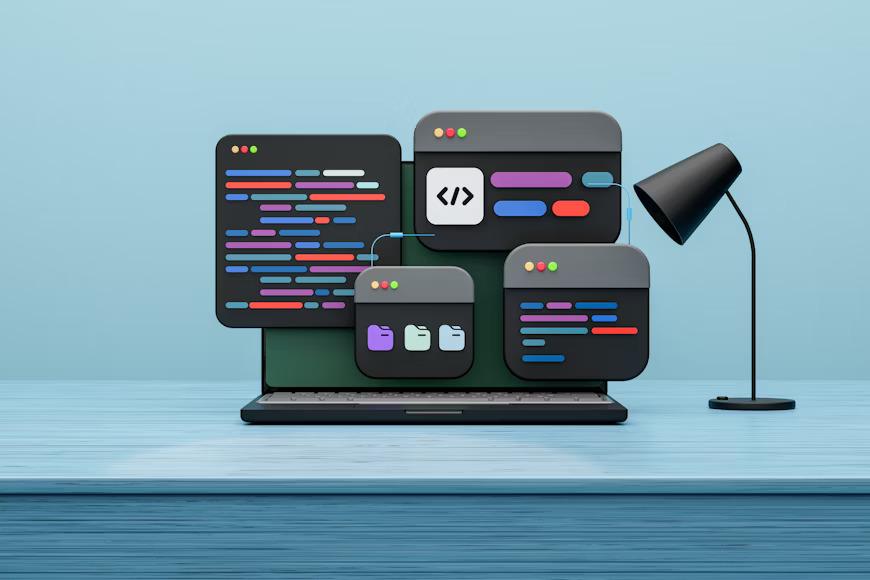AI-Driven Workflows: How LLMs Transform Mobile Development Teams

AI has successfully evolved from an experiment to a reality. It is here to transform the way businesses develop. Mobile developers are heavily relying on artificial intelligence to introduce new concepts.
Mobile application development team are adopting large language models into their workflows. The integration of chatbots into various apps is helping upgrade user satisfaction levels. AI tools are helping developers generate prototypes and reshaping collaboration between teams.
But with every opportunity comes challenges. While AI is helping with almost every workflow, it also raises security concerns. Let's explore how businesses are using LLMs in the development cycle.
Why Mobile Dev Teams Are Turning to LLMs
Mobile development and consulting have always been resource-intensive. Teams face firm due dates, platform fragmentation, and rising user anticipation. LLMs bring new ways to ease these pressures.
Key reasons for adoption:
-
Faster coding: Developers spend less time writing average code.
-
Quick prototyping: Teams can test ideas faster with auto-generated templates.
-
Knowledge support: LLMs help bridge skill gaps for junior developers.
-
Better collaboration: AI assists in creating documentation and summaries.
Instead of replacing developers, LLMs act as supportive tools that boost efficiency.
Use Cases of LLMs in Mobile Development
1. Code Generation
LLMs can generate code snippets on demand. For the mobile app development teams, this means:
-
Auto-creating UI components for iOS or Android.
-
Writing repetitive functions like form validation.
-
Suggesting best practices for API calls.
-
Translating code between Swift, Kotlin, Dart, or JavaScript.
This mitigates repetitive tasks, freeing developers for complicated logics.
2. Debugging and Code Reviews
Debugging consumes a big part of development time. LLMs help by:
-
Identifying possible causes of errors.
-
Suggesting optimized fixes.
-
Reviewing pull requests for style and security issues.
-
Explaining code segments in simple language for new team members.
This results in faster feedback loops and more constant quality development.
3. Prototyping and UI Design
LLMs support design-to-code workflows. Teams can:
-
Convert wireframes into starter code for Flutter or React Native.
-
Generate sample layouts for onboarding screens.
-
Suggest UI patterns aligned with platform guidelines.
-
Provide instant iterations during brainstorming sessions.
This accelerates the early stages of app development.
4. Knowledge Sharing and Onboarding
New developers often struggle with large codebases. LLMs can:
-
Summarize project architecture.
-
Answer questions about function usage.
-
Provide context for dependencies and libraries.
This reduces onboarding time and helps teams scale faster.
5. Automated Documentation
Documentation often gets neglected. LLMs solve this by:
-
Writing comments directly into code.
-
Generating API documentation from function definitions.
-
Creating release notes from commit history.
Consistent documentation improves collaboration between devs, testers, and designers.
6. Multilingual Support
Many teams target global users. LLMs make localization easier by:
-
Translating app content into many languages.
-
Suggesting culturally appropriate phrasing.
-
Checking consistency across translations.
This speeds up app launches in international markets.
Benefits of Integrating LLMs
Mobile app development teams adopting AI-driven workflows bring clear advantages.
-
Productivity boost: Faster coding and prototyping save time.
-
Consistency: LLMs follow style guides and reduce human errors.
-
Accessibility: Non-expert developers get support to work on complex tasks.
-
Collaboration: Shared AI outputs act as a common ground for team discussions.
-
Innovation: Teams can test more ideas without heavy resource use.
Challenges and Risks
LLMs also introduce risks that teams must manage.
-
Accuracy issues: AI-generated code may contain hidden bugs.
-
Security risks: Outputs may not follow best security practices.
-
Overreliance: Teams may rely too much on AI and neglect core mobile development and consulting skills.
-
Context limitations: LLMs may misunderstand project-specific requirements.
-
Intellectual property concerns: Some outputs raise questions about ownership and licensing.
Best Practices for Using LLMs in Mobile Teams
A mobile development and consulting team could maximize the benefits of LLM. By adopting the strategies below, they could eliminate the risks mentioned:
-
Human oversight: Take a good look at the code generated through AI before merging.
-
Define boundaries: Use AI tools for help in coding. Do not make a decision based on the AI overview.
-
Security checks: Run code through automated scanners for exposures.
-
Team training: Educate developers about the strengths and weaknesses of LLMs.
-
Continuous feedback: Collect input from the team to improve AI workflows.
Conclusion
LLMs are transforming every industry. It has reconstituted the way mobile application development teams work. They reduce repetitive work manually by humans. They help in simplifying prototyping and make partnerships among teams smooth. But at the same time, they pose some risks around security and accuracy.
However, it is possible to end those risks. The most successful teams will be those who use AI as their partner, not a replacement. By using human judgment with AI-integrated tools, mobile teams can deliver better apps.
The integration of LLMs is not just a movement. It is becoming a norm for advanced mobile workflows. Those who adapt now will stay ahead in an always-evolving industry.
Book a call with Teqnovos and start with your dream app development today!







